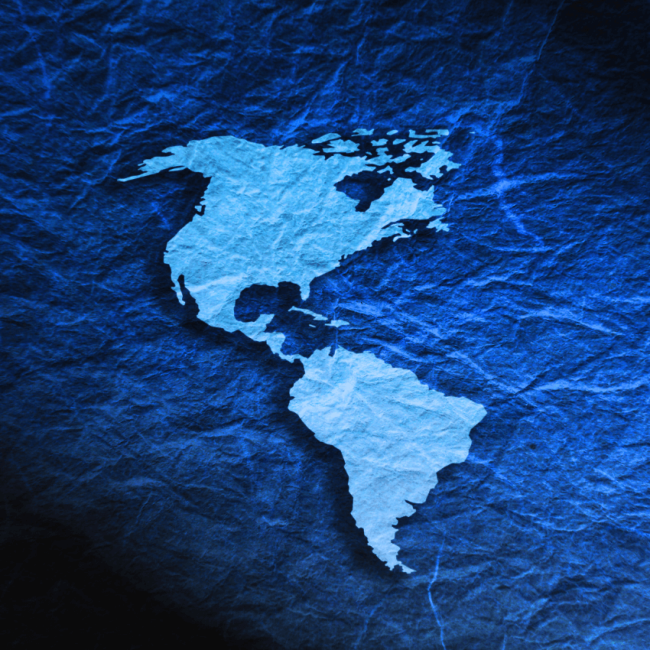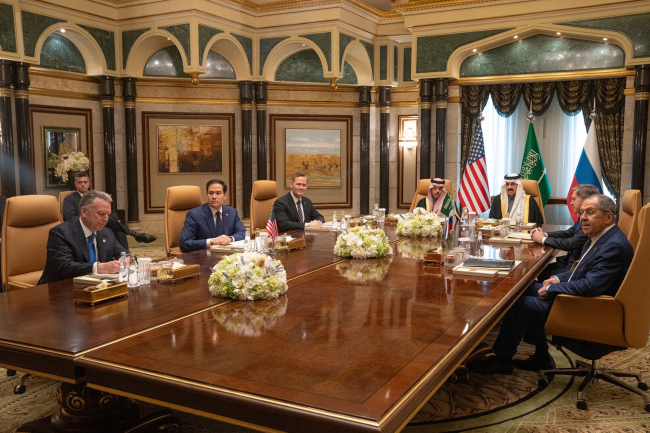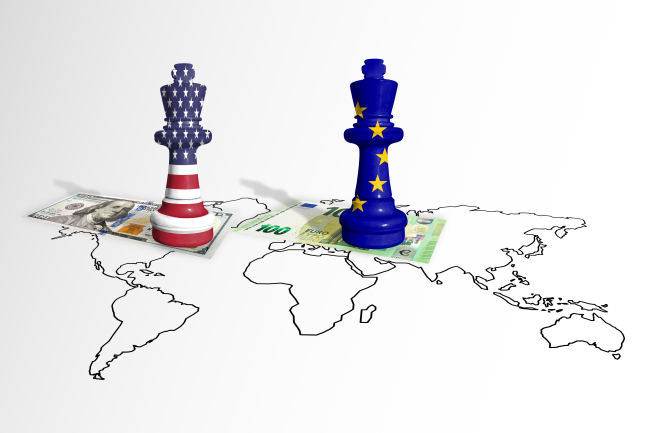Blaming El Norte: The Economic Realities of Anti-Americanism South of the Rio Grande
For more than half a century, Cuba captured America’s attention as a symbol of anti-Americanism right in its own backyard. As normalized relations between the United States and Cuba bring these iconic hostilities to a close, many wonder if Castro’s Cold War rhetoric is finally dead. Borne primarily by Venezuela and Ecuador, Latin America's anti-Americanism has in fact merely transformed into an equally aggravating but less consequential trend today. Economic dependency tempers this new thorn in the United States’ side.

Understanding the Left
The 2010 earthquake in Haiti? Caused by a “tectonic weapon” as part of a plan to occupy the country (President Chavez, 2010[1]) Cancer? A U.S. plot to kill Latin American leaders (President Chavez, 2011[2]). Economic collapse? The result of American economic sabotage (President Maduro, 2013[3]). The United States is always to blame and despite their best efforts, Latin American governments remain powerless against U.S. hegemony.
Although anti-American rhetoric exists to some extent in most leftist Latin American governments, Venezuela and Ecuador have emerged as the United States’ loudest critics over the past two decades. In the midst of increasing disillusionment with U.S.-backed neoliberal policies, social protests catapulted late Venezuelan President Hugo Chavez into the national spotlight while Ecuadoran President Rafael Correa came to power after a successful stint as Finance Minister. Elected as populist political outsiders, both leaders embraced fervent anti-Americanism as a source of domestic political capital and as a symbolic departure from previous policies.
However, hostilities between the United States and its unfriendly Latin American counterparts rarely escalate. Unlike in past eras, Latin America will not jeopardize economic relationships with the United States for political gain.
Economic Realities
This paradox stems from the United States’ close economic ties to almost every country in the region. The Inter-American Dialogue, a Washington D.C.-based think tank, reports that “the U.S. currently buys about 40 percent of Latin America’s exports and an even higher percentage of its manufactured products. It remains the first or second commercial partner for nearly every country in the region. And it provides nearly 40 percent of foreign investment and upwards of 90 percent of the $60 billion or so in remittance income that goes to Latin America.”
Good diplomatic relationships are not a prerequisite for economic ties and as a result, states such as Venezuela and Ecuador are among the largest beneficiaries of this policy. Meanwhile, this arrangement provides the United States with a high degree of regional control.
While U.S. trade, investment, and remittances are tremendously important to most Latin American economies, the reverse is not necessarily true. Only Mexico, Brazil and Colombia place among the United States’ top 20 trade partners. Conversely, the U.S. is one of the top 5 trade partners for almost every country in Latin America. This in turn creates an uneven power dynamic in which most Latin American countries can inflict relatively little economic harm on the United States while the U.S. has the potential to hurt their economies.
Ecuador
Despite President Rafael Correa’s increased dependence on Chinese loans to finance public spending, the country’s economy has strong links to that of the United States and shows few signs of change. The United States accounts for 41% of Ecuadoran exports and 27% of all imports, making the U.S. Ecuador’s top trading partner. Furthermore, remittances, largely from the United States, constitute almost 3% of the country’s GDP.
Most importantly however, Ecuador adopted the U.S. dollar in 2000 to combat an economic crisis. Although Rafael Correa publically denounces Ecuador’s use of the dollar, he recognizes the exorbitant cost of adopting another currency. In 2014, the President took everyone by surprise announcing the world’s first entirely digital currency. Many initially interpreted the move as a power grab and an attempt to address the government’s finances. However, given the lack of popular enthusiasm for the initiative, it is unlikely that the new digital currency will challenge the dollar’s influence.
Venezuela
Many economists look at Ecuador’s example and tout dollarization as the solution to Venezuela’s current economic crisis. What they don’t recognize is that this practice has already begun. Although dollarization remains illegal in Venezuela, President Chavez's successor Nicolas Maduro tacitly accepted the practice by creating exceptions for a number of multinational corporations. International firms such as Ford struck deals with the government to sell their products only in dollars. Those such as the homecare corporation Clorox that did not negotiate dollarization agreements simply left the market.
Meanwhile, hyperinflation has forced many economic sectors to dollarize illegally. For example, many high-end neighborhoods no longer accept rent or purchases in bolivars. In practice, this creates an unofficial dual currency system. It gives those with dollars stability and access to goods completely different from those less fortunate, in effect contradicting the Venezuelan government’s stated goal of decreasing inequality.
Maduro’s refusal to enact a blanket legalization of U.S. dollars puts the business community further at odds with the government. Venezuela has among the worst property rights in the world, ranked 176th by the Index of Economic Freedom. Consequently, Foreign Direct Investment has plummeted and the wealthy have fled to the United States. Without these economic opportunities, Venezuela needs trade with the U.S. now more than ever.
On the surface, Chavez styled himself as a staunch opponent of capitalism but in practice he pushed the country to deeper foreign dependence. As reforms drove down production, imports rose. Today the United States is Venezuela’s 5th largest export partner and its largest import market, accounting for 2.5% of exports and 20% of imports. Plagued by shortages, Venezuela cannot afford to sacrifice this trading partnership. It may threaten to end oil exports as it did in 2013; however, these threats remain largely empty.
U.S. sanctions, a bad idea
Initially a reaction to human rights abuses and opposition arrests related to violent clashes between Venezuelan authorities and protesters last year, the U.S. decision to impose sanctions on Venezuela puts the opposition there in a jam. The Democratic Unity Roundtable, the country’s main opposition party, condemned the sanctions, claiming that “Venezuela is not a threat to any nation.” In fact, U.S. actions shift public attention from the government’s wrongdoings to those of the United States and validate Maduro’s rhetoric. This in turn counters the sanctions’ original intent by rhetorically strengthening the crumbling Venezuelan government rather than hastening its collapse.
Furthermore, the sanctions mitigate the progress made in improving the relationship between Washington and Latin America. The region’s leaders breathed a sigh of relief when Barack Obama announced the normalization of U.S. diplomatic relations with Cuba, believing it marked the beginning of a new political era in the region. However, in the eyes of many Latin American governments, mounting sanctions against Venezuela prove otherwise. The Union of South American Nations declared the U.S. actions “a threat to sovereignty and the principle of non-intervention in the internal affairs of other states,” while demanding their rescission. This could prove a major roadblock in the Obama Administration’s mission to increase hemispheric cooperation.
Any Challengers?
At first glance, China’s increased involvement in the region could pose a threat to U.S. economic and political dominance. After all, China’s economic stake in Latin America increased twenty-two-fold over the past fifteen years. That being said, this relationship should not be blown out of proportion. China wants access to Latin American resources, not a balance to U.S. hegemony. Furthermore, given the extent of U.S. economic involvement in the region, China is a long way from rivaling the American economic position. If China’s investment increases at its current rate it could pose an issue for the United States. This is no short-term concern however.
With little foreign competition for influence, the greatest challenge to anti-Americanism may come from Latin America itself. Studies show that most people in the region have a positive perception of the United States. That number is expected to rise as Cold War atrocities fade in collective memory and immigration ties strengthen.
Protests across the region have threatened populist and non-populist governments alike. With President Maduro’s approval rating hovering below 25% and widespread pro-opposition protests, a 2016 recall referendum could cut his term short. Meanwhile, in Ecuador, many have taken to the streets in opposition to Correa’s proposed 77% inheritance tax just months after general anti-government protests engulfed thirteen major cities. Brazilian President Dilma Rousseff and Argentine President Kristina Fernandez de Kirchner both use more moderate rhetoric but are also under fire. Although most if not all of the region’s leaders will likely carry out their terms, new elections could result in major victories for opposition candidates and a shift away from today’s anti-Americanism.
No Cause for Concern
Even though U.S. sanctions against Venezuela serve as a reminder that tensions persist, anti-Americanism in Latin America seems to pose little actual concern. History has shown that this rhetoric comes and goes. In the current context, with left-wing populist governments losing favor among the masses, extensive economic ties binding the United States and Latin America together and globalization showing no sign of slowing down, the resurgence of a powerful and consequential brand of anti-American rhetoric in the region seems unlikely. Seen from Washington, there are far more important things to worry about in today’s geopolitical climate.
[1] Chávez acusa a EE.UU. de provocar el seísmo de Haití (2010, January 20). Retrieved from http://www.abc.es/20100119/internacional-/chavez-acusa-provocar-seismo-201001191332.html
[2] Chávez se pregunta si cáncer de mandatarios es culpa de EEUU [video file]. (2011, December 28). Retrieved from https://www.youtube.com/watch?v=nlQp_Jb2HRs
[3] Maduro reitera que Guerra economica fue planeada desde Washington [Video file]. (2013, November 12). Retrieved from https://www.youtube.com/watch?v=kQNupuZ8ngo

Available in:
Regions and themes
Share
Related centers and programs
Discover our other research centers and programsFind out more
Discover all our analysesDonald Trump v. the States: the Case of New York
While the disruptive policies of the second Trump administration are being implemented at the federal level and on the international stage, they are also being felt in the federal states and major cities across the country. In the spring of 2025, several cases involving the state and city of New York demonstrate that the president’s attacks on environmental protection, the separation of powers, freedom of speech, etc., are also being carried out at the local level.
How the US under Trump Became a Strategic and Ideological Adversary of Europe
The Europeans' worst security nightmare seems to be coming true: on Tuesday, February 18, 2025, U.S. Secretary of State Marco Rubio and Russian Foreign Minister Sergey Lavrov met in Saudi Arabia to initiate the normalization of relations between their two countries. The meeting also aimed to set up peace negotiations for Ukraine. However, despite having the potential to affect the entire continent, the discussions took place without the Europeans or the Ukrainians being present.
Will Trumpian Authoritarianism Lead to a Constitutional Crisis?
Since his return to the White House on January 20, 2025, President Donald Trump has signed around sixty executive orders to implement his political agenda. Numerous other measures have also been introduced by the White House and the new Department of Government Efficiency (DOGE) as part of these orders.
Trump’s Second Term: Laying the Groundwork for a New Trade War
In a statement released on February 1, 2025, President Trump announced the implementation of a 10% tariff on Chinese goods and a 25% tariff on imports from Canada and Mexico. While the former took effect via executive order on February 4, the latter were granted a 30-day reprieve. Sanctions targeting European Union (EU) products are said to be imminent.








